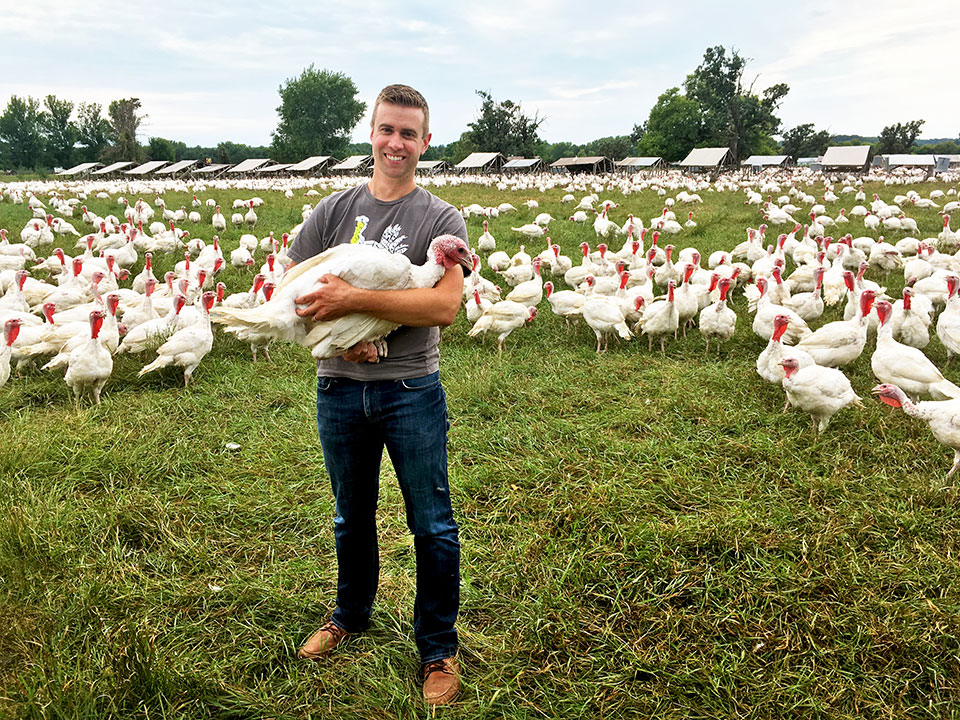Why Sustainable Turkey Matters

Not all turkeys are birds are of the same feather. To get the highest quality best-tasting turkey for your Thanksgiving table, let sustainability be your guide star. Choose a local, free-range turkey raised by a farmer who cares about the animals, the environment, and the people who work on the farm. Fresh local turkeys taste better because they exercise outside and eat a natural diet, free of chemicals, hormones, and antibiotics. Free-range turkey meat is denser, firmer, and actually tastes like turkey. (Factory-farmed turkeys fed antibiotics and hormones to speed their growth, tend to have flavorless, soft-textured meat. Factory farmed turkeys are bred to have huge breasts, those turkeys can’t walk without tipping over.) Local, free-range turkeys sport plump thighs and smaller breasts and their meat is rich and moist with a skin that roasts up super crisp.
What Size Do I Need?
When choosing a whole turkey, estimate about one-pound of turkey per serving (to take into account shrinkage, bones, etc.). Fresh turkeys cook quickly (about 10 to 12 minutes a pound) so time your meal accordingly.
Turkey Prep
To ensure the skin is super crisp, begin the night before. Rinse the turkey inside and out; season with coarse salt and freshly ground black pepper, and set on a plate in the refrigerator uncovered. This allows the skin to dry out a little before it hits the oven’s heat.
Cooking Tips
To roast, preheat the oven to 500 degrees F. Rub butter under the breast skin, and then over the entire turkey, and season generously with plenty of coarse salt and freshly ground black pepper. Place the turkey on a roasting rack set over a roasting pan and add one cup of wine (or water) to the pan. Put the turkey in the preheated oven. After about 30 minutes, reduce the heat to 350-degrees F. and plan on about 10 to 12 minutes per pound. Baste with the pan juices every 20 minutes. The meat is cooked and safe to eat when an instant-read thermometer inserted into the thigh reaches 160 degrees F.
It’s always best to cook the stuffing on the side. Cooking it in the turkey causes havoc with the cooking time (slowing it down) and can cause problems if isn’t cooked to the right temperature. Instead, stuff the cavity of the turkey with onions, apples, and herbs; leaving the cavity completely open dries the meat out. The smaller turkeys tend t cook more evenly, so there is less chance of the breast meat over-cooking before the dark meat is done. If you’re serving a crowd, two (small birds) are better than (a big) one.
